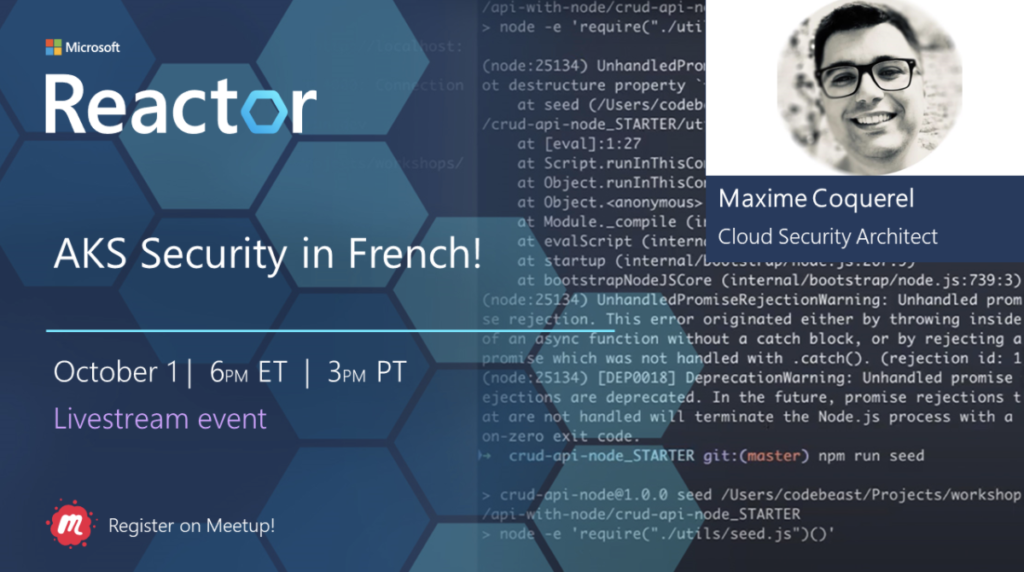Bonjour,
Aujourd’hui, j’ai le plaisir de vous annoncer que je vais animer une conférence sur la thématique de la sécurité des clusters AKS pour le Microsoft Reactor Toronto. Pour la première fois au Microsoft Reactor, cette conférence sera dispensé en Français et ce pour le plus grand plaisir des communautés Francophone.

Cette conférence pourra être suivi en ligne le jeudi 1er Octobre de 18h à 19h.
Afin de vous inscrire je vous donne rendez-vous au lien suivant: https://www.meetup.com/fr-FR/Microsoft-Reactor-Toronto/events/273113179/
N’hésitez pas à me solliciter si vous avez des questions avant ou après la conférence.
Maxime.